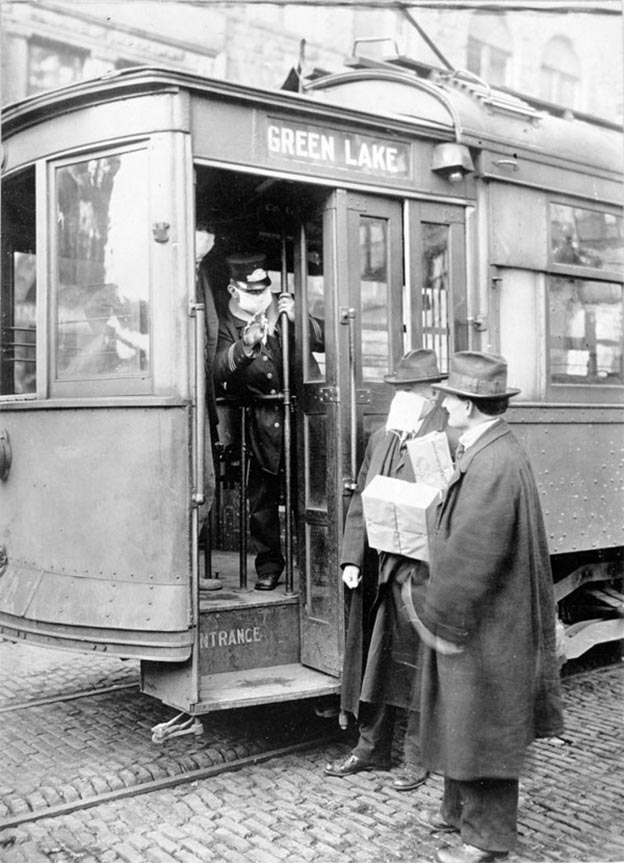Researchers crack causes behind Spanish flu’s ‘waves’

A street car conductor keeps a passenger without a protective mask from boarding in 1918. McMaster researchers have found that changes in human behaviour were the biggest factors behind the flu spreading in waves at the end of the First World War.
Just as the First World War was coming to an end in 1918, three waves of the deadliest influenza pandemic in history, known as the Spanish flu, hit England and Wales.
But why does the flu arrive in multiple waves? McMaster researchers recently discovered three contributing factors: the closing and opening of schools, temperature changes and (most importantly) changes in human behaviour.
“We found all three factors were important in 1918, but that behavioural responses had the largest effect,” says David Earn, an investigator with the Michael G. DeGroote Institute for Infectious Disease Research, and a professor in the Department of Mathematics and Statistics.
The study appears in the July 10 online issue of the Proceedings of the Royal Society.
The researchers did not measure behavioural change directly. Instead, their model shows that the three waves could only be explained if people reduced infectious contact rates when recent influenza mortality was high. Possible mechanisms include avoiding large gatherings, keeping distance from other people and hand-washing.
The study’s findings are significant as global health officials keep watch on an emerging virus — Middle East Respiratory Syndrome (MERS) — which is said to be more deadly than Severe Acute Respiratory Syndrome (SARS), and has already spread from Saudi Arabia to France, Germany, Italy and Britain. Dr. Margaret Chan, director-general of the World Health Organization, has called MERS a “threat to the entire world.”
To investigate factors underlying the three-wave shape of the 1918 influenza epidemic, McMaster researchers developed what they describe as a simple epidemic model. It incorporates three factors in addition to natural disease spread: school terms, temperature changes during an outbreak and changes in human behavior.
To collect information, researchers scoured available historical documents and collected data about weekly influenza deaths.
The paper concludes that behavioral changes of people, temperature trends and school closure all contributed to the three-wave mortality patterns in the UK during the 1918 influenza pandemic, with behavioral changes having the greatest effect.
Earn conducted the study with colleague Dr. Jonathan Dushoff, associate professor, Department of Biology, and researchers at Hong Kong Polytechnic University, Queen’s University and the University of Victoria.
The study was funded by the Canadian Institutes of Health Research, the Natural Sciences and Engineering Research Council of Canada and the Public Health Agency of Canada.

